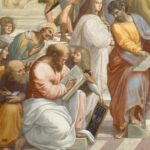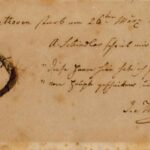The Flow is a psychological term we use often. Although, it became popular in the past decades this state of mind is not new to humans. Buddhism and Daoism, under different name have this concept for thousands of years. What is it exactly and what evidence we have that Beethoven was familiar with the flow?
What is the Flow?
In 1975 Mihaly Csikszentmihályi, a Hungarian-American psychologist, came up with the idea of the flow. The flow is a state of mind when someone is in perfect and complete focusing. During the activity a person feels creative energy and positive feelings, often losing track of time. Csikszentmihályi had been observing painters, who got lost in their works so much, that they forgot their basic needs such as food or water, sometimes even sleep.
The flow is different from other high or hyper-focus experiences, as some of these can be negative. One example is the person who can lost in a minor task and lose focus on the bigger picture; or kids playing video games for a long period. Flow always carries a positive, energizing and rewarding feeling.
Beethoven and his raptus
The Latin word raptus means seized, from rapere meaning to seize. Today in medical field it refers to seizure, in law to confiscation or robbery. In Beethoven’s case it meant something different.
Like many other artists Beethoven also was familiar with the flow. Maybe, even more than just the flow! As a child he often experienced such episodes or rather the people around him did. In these states he became oblivious to his surroundings, lost in his thoughts and feelings.
Childhood friend Cäcilie Fischer, the daughter of the landlord, where the Beethovens resided in Bonn, recalled one of these situations. The girl was talking to Ludwig, who seemed to be absent, not even hearing her. Then, finally he came to and said “I was just occupied with such a lovely, deep thought, I couldn’t bear to be disturbed.” It was so regular that Helene von Breuning, head of a friendly family and a substitute mother to Ludwig, gave a name to these episodes: raptus. She would say “He has his raptus again today.”
Further evidence of these episodes being commonplace and well known to his friends is a letter he, many years later, wrote to his friend Wegeler. In this he sends greetings to Helene and says, “Tell her, that I still now and then have a raptus.” Again, years later to Bettina Brentano, after she read back the inspired and beautiful letter to Goethe that Beethoven had dictated to her: “Did I say that? Well, then I had a raptus!”
Beethoven’s trance, his raptus, was his safe place somewhat also the representation of his solitude. Alone he was in his rooms, wondering in nature, in his deaf and silent head – and in his raptus. It was the same flow that happened when he started playing or improvising. Music flowing from his spirit through his hands, lost in the moment.
To the outside world sometimes it was scary. He often was a guest at wealthy or noble families, where servants were terrified by the crazy man, who stayed in his guest room for days without leaving, eating or emptying his chamber pot. In other times he would stroll around a castle for hours, even in rain, crooning and conducting in the air until he finally found the perfect note or melody.





